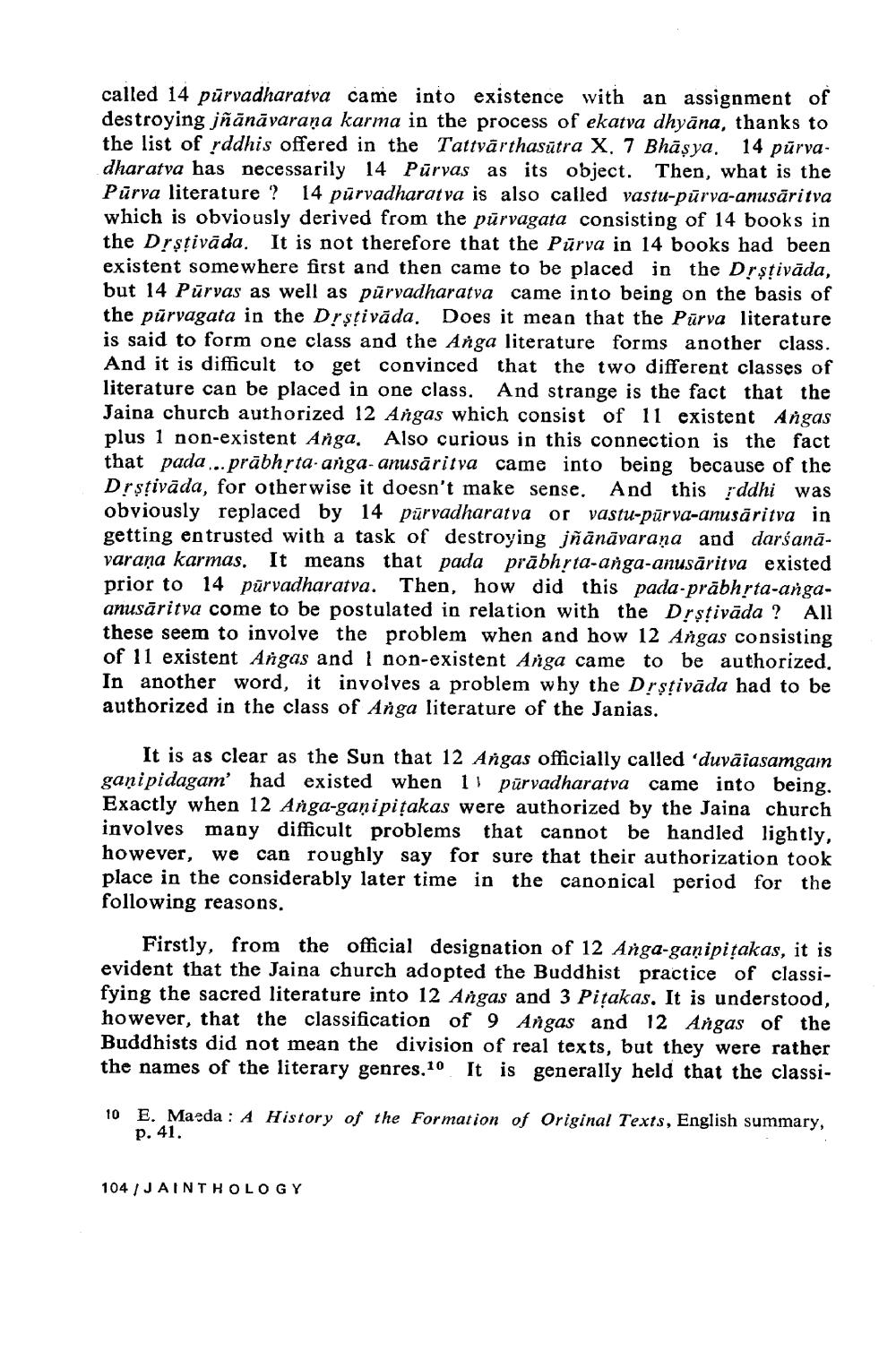________________
called 14 pūrvadharatva came into existence with an assignment of destroying jñānāvaraṇa karma in the process of ekatva dhyāna, thanks to the list of rddhis offered in the Tattvārthasūtra X. 7 Bhāşya 14 pūrvadharatva has necessarily 14 Pürvas as its object. Then, what is the Purva literature ? 14 pūrvadharatva is also called vastu-pūrva-anusäritva which is obviously derived from the purvagata consisting of 14 books in the Drstivāda. It is not therefore that the Pūrva in 14 books had been existent somewhere first and then came to be placed in the Drşțivāda, but 14 Pürvas as well as pūrvadharatva came into being on the basis of the pūrvagata in the Drștivāda. Does it mean that the Pūrva literature is said to form one class and the Anga literature forms another class. And it is difficult to get convinced that the two different classes of literature can be placed in one class. And strange is the fact that the Jaina churcb authorized 12 Angas which consist of 11 existent Angas plus 1 non-existent Anga. Also curious in this connection is the fact that pada ... prābhrta-arga- anusăritya came into being because of the Drstivāda, for otherwise it doesn't make sense. And this rddhi was obviously replaced by 14 pūrvadharatva or vastu-pūrva-anusăritva in getting entrusted with a task of destroying jñānāvaraņa and darśanā. varana karmas. It means that pada prābhrta-anga-anusäritva existed prior to 14 pūrvadharatva. Then, how did this pada-prābhrta-angaanusāritva come to be postulated in relation with the Drşțivāda ? All these seem to involve the problem when and how 12 Angas consisting of 11 existent Angas and I non-existent Anga came to be authorized. In another word, it involves a problem why the Drşivāda had to be authorized in the class of Anga literature of the Janias.
It is as clear as the Sun that 12 Angas officially called 'duvāiasamgam ganipidagam' had existed when 11 pūrvadharatva came into being. Exactly when 12 Anga-ganipițakas were authorized by the Jaina church involves many difficult problems that cannot be handled lightly, however, we can roughly say for sure that their authorization took place in the considerably later time in the canonical period for the following reasons.
Firstly, from the official designation of 12 Anga-ganipițakas, it is evident that the Jaina church adopted the Buddhist practice of classifying the sacred literature into 12 Angas and 3 Pitakas. It is understood, however, that the classification of 9 Angas and 12 Angas of the Buddhists did not mean the division of real texts, but they were rather the names of the literary genres.10 It is generally held that the classi
10 E. Maeda : A History of the Formation of Original Texts, English summary,
p. 41.
104/JAINTHOLOGY




